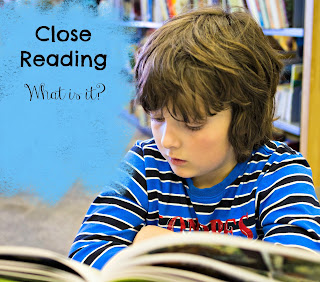Close Reading is an instructional practice where students are guided through their understanding of a text. Think of close reading like investigating a text. Going over it piece by piece. Analyzing it for all of its clues that it might yield. When a student close reads a text, he reads it multiple times, going over minute details looking for clues to tone, imagery, main idea, author's purpose, word meaning, and nuances in meaning. Close reading is not necessary for all text, but it is necessary for complex texts. Close reading is used when the complex text challenges the reader's thinking. When they close read, students reread parts of the text for different purposes. Each reading should yield some new bit of understanding. Annotating or marking up the text is extremely important. In fact, it's the first lesson that I teach in my RTI class to my new students. I don't teach it to my other students because they've already learned how to annotate...





